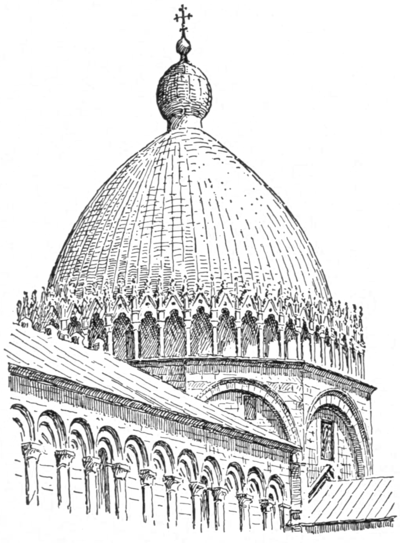polygonal on plan, as at Aachen, and in some cases hemispherical) found in most other mediæval domes, and the timber roof over all is likewise common. But in a few cases a different scheme was adopted in which the dome is set on the top of the drum instead of within it. In such cases, however, the drum is low, not rising above the ridge of the timber roof of the nave, and the dome, being unprovided with abutment, is

Fig. 3.—Dome of Pisa.
insecure except in so far as it may have a form that is self-sustaining as to thrusts (which removes it from the true dome shape), or may be secured by some kind of binding chain.[1] An example of such a dome occurs on a small scale over the crossing of the cathedral of Pisa (Fig. 3). This dome is not hemispherical, its sides rise steeply, and with such moderate curvature as to render it measurably self-sustaining as to
- ↑ The elevated domes of Arabian architecture are in many cases constructed of wood and stucco. When of masonry they are, I believe, either weighted within where the thrusts fall, or are bound with chains.
